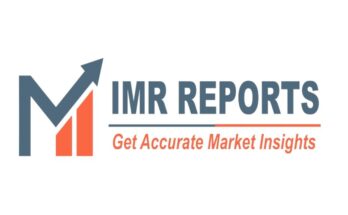The Drug Delivery Devices by The Business Research Company provides market overview across 60+ geographies in the seven regions – Asia-Pacific, Western Europe, Eastern Europe, North America, South America, the Middle East, and Africa, encompassing 27 major global industries. The report presents a comprehensive analysis over a ten-year historic period (2010-2021) and extends its insights into a ten-year forecast period (2023-2033).
Learn More On The Drug Delivery Devices Market:
https://www.thebusinessresearchcompany.com/report/drug-delivery-devices-global-market-report
According to The Business Research Company’s Drug Delivery Devices, The drug delivery devices market size has grown strongly in recent years. It will grow from $87.65 billion in 2023 to $94.7 billion in 2024 at a compound annual growth rate (CAGR) of 8.0%. The growth in the historic period can be attributed to rapid growth in elderly population, growth in the number of healthcare facilities, economic growth in the emerging markets and increased healthcarew expenditure.
The drug delivery devices market size is expected to see strong growth in the next few years. It will grow to $122.07 billion in 2028 at a compound annual growth rate (CAGR) of 6.6%. The growth in the forecast period can be attributed to increase in prevalence of chronic diseases, increasing demand from injectables, increasing demand for drug delivery devices and sudden emergence of severe infectipns . Major trends in the forecast period include investing in microneedle drug technology for drug delivery, research and development ofself-injectable drug delivery devices, focusing on mergers and acquisitions and investing in wearable drug delivery devices.
The rising prevalence of chronic diseases such as cardiovascular diseases, diabetes, cancer and other diseases is expected to drive the drug delivery devices market. For instance, in January 2023, according to the National Library of Medicine, a US-based medical library operated by the federal government, the number of individuals in the United States aged 50 and older who have at least one chronic condition is projected to increase by 99.5%. This increase would see the number rise from 71.522 million in 2020 to 142.66 million by 2050. There are various routes of drug administration for medical drugs. The selection of the route depends on three factors – the effect desired; the type of the disease and the type of the product. Currently, the development of new drug delivery systems plays a major role in the pharmaceutical industry. Research and development (R&D) in drug delivery is increasing throughout the world due to the increasing prevalence of these diseases. Most pharmaceutical companies are focusing on multiple drug delivery technologies to create excellent advantages and better outcomes for their marketed products. Hence, the increasing prevalence of chronic diseases is resulting in increased consumption of therapeutic drugs and therapies, and this factor is expected to act as a driver for the growth of the drug delivery devices market.
Get A Free Sample Of The Report (Includes Graphs And Tables):
https://www.thebusinessresearchcompany.com/sample.aspx?id=2833&type=smp
The drug delivery devices market covered in this report is segmented –
1) By Route Of Administration: Oral Drug Delivery, Injectable Drug Delivery, Topical Drug Delivery, Ocular Drug Delivery, Pulmonary Drug Delivery, Nasal Drug Delivery, Transmucosal Drug Delivery, Implantable Drug Delivery
2) By Patient Care Setting: Hospitals, Diagnostic Centers, Ambulatory Surgery Centers/Clinics, Home Care Settings, Other Patient Care Settings
3) By Application: Cancer, Infectious Diseases, Respiratory Diseases, Diabetes, Cardiovascular Diseases, Autoimmune Diseases, Central Nervous System Disorders, Other Applications
Major companies operating in the drug delivery device market are focusing on developing innovative devices such as autoinjectors with completely built-in connectivity to gain a competitive edge in the market. Autoinjectors are medical devices designed for the self-administration of a pre-measured dose of medication. For instance, in December 2021, Ypsomed AG, a Switzerland-based manufacturer of injection and infusion equipment, launched YpsoMate, an autoinjector with fully integrated connectivity. The device has built-in Bluetooth communication as standard, which can connect to mobile phones and tablets to transfer injection and device data. The autoinjector offers digital therapy support through integrated connectivity, automatically recording the administration of medication and providing data to healthcare providers.
The drug delivery devices market report table of contents includes:
1. Executive Summary
2. Drug Delivery Devices Market Characteristics
3. Drug Delivery Devices Market Trends And Strategies
4. Drug Delivery Devices Market – Macro Economic Scenario
5. Global Drug Delivery Devices Market Size and Growth
…………….
31. Drug Delivery Devices Market Other Major And Innovative Companies
32. Global Drug Delivery Devices Market Competitive Benchmarking
33. Global Drug Delivery Devices Market Competitive Dashboard
34. Key Mergers And Acquisitions In The Drug Delivery Devices Market
35. Drug Delivery Devices Market Future Outlook and Potential Analysis
Read Related Topics:
Contact Us:
The Business Research Company
Europe: +44 207 1930 708
Asia: +91 88972 63534
Americas: +1 315 623 0293
Email: [email protected]
Follow Us On:
LinkedIn: https://in.linkedin.com/company/the-business-research-company
Twitter: https://twitter.com/tbrc_info
Facebook: https://www.facebook.com/TheBusinessResearchCompany
YouTube: https://www.youtube.com/channel/UC24_fI0rV8cR5DxlCpgmyFQ
Blog: https://blog.tbrc.info/
Healthcare Blog: https://healthcareresearchreports.com/
Global Market Model: https://www.thebusinessresearchcompany.com/global-market-model




